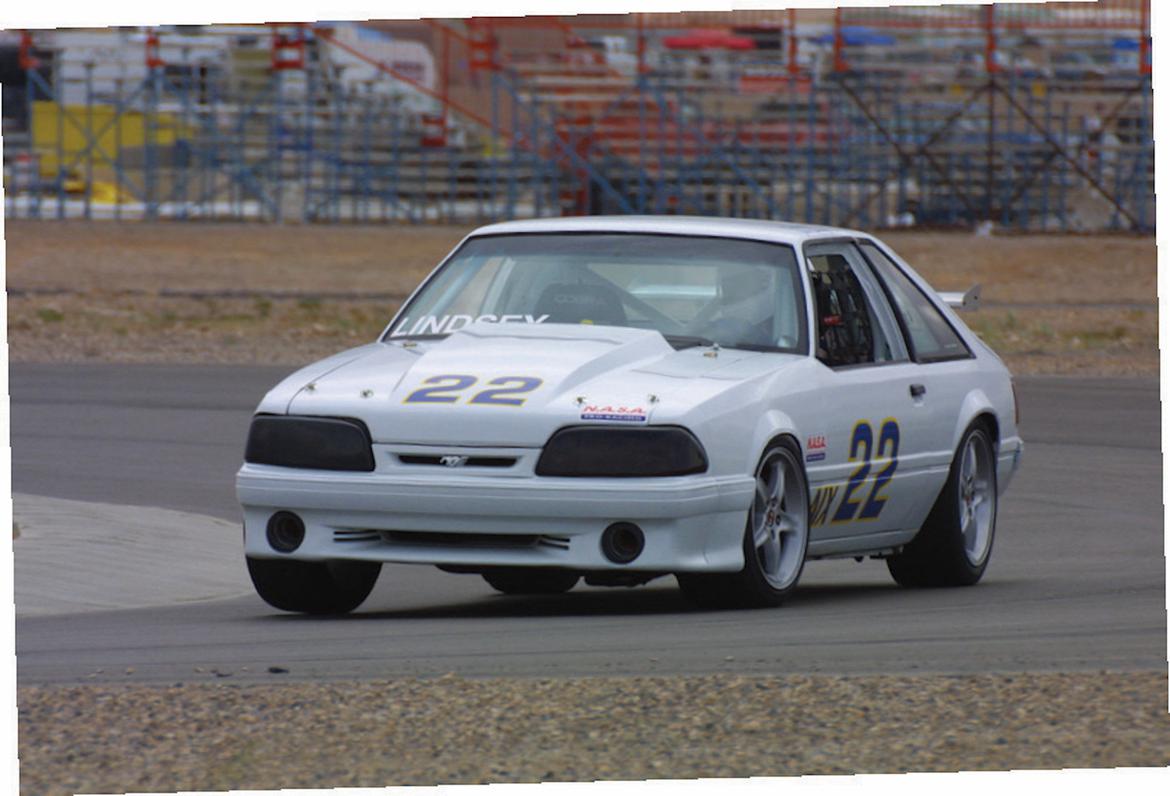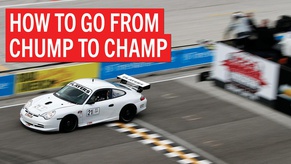Precisely 30 years ago, in 1989, sports car enthusiasts Jerry Kunzman and Ali Arsham began discussing a different kind of automobile racing club, one that was perhaps less rigid and a little more inclusive than the Sports Car Club of America of the day.
In 1991, talking gave way to action. The National Auto Sport Association was born in the Bay Area.
The consensus: that a rising tide floats all race cars. That there’s room for both groups, along with the plethora of other clubs and businesses offering track time, driving schools, and low-buck endurance racing. The important thing is to get new enthusiasts into the tent. Where they go from there is their decision. But until they turn that first wheel in competition or find a place to help out a program they like, no one stands to benefit.
The Space Race Begins

Photography Courtesy NASA
It all began, as noted, in 1991, when friends Kunzman and Arsham–and a third associate who moved on rather quickly after being in on the original planning–decided to organize track days for fellow enthusiasts at major motorsports venues. The initial plan was to go nonprofit, but for legal and common-sense reasons they decided to establish it as a business.
One of those reasons: The almost all-volunteer makeup of the SCCA has traditionally made for glacial responses to problems that would be better served by a quick turnaround. To change a rule or a policy, the SCCA president must get theapproval of the geographically far-flung board, which is not given to snap decision making. Former SCCA President Jim Julow, once head of the Dodge brand and its motorsports programs, likened dealing with the board to herding cats. That’s improved in recent years, though there’s still an official process required to make changes.
That’s less true at NASA, which has a reputation for off-the-hip changes. Some find this approach too aggressive, but it undeniably delivers massively quick resolutions when problems arise. NASA might recognize a group of cars that would make an effective class, and voilà, a new class is formed. Similarly, classes that aren’t working can be swiftly broomed. Also, what works in one region may not work in another, so the regions are free to do their own thing, within limits.
In a GRM interview with Arsham in 2000–he has since left NASA but remains in the sport, mostly with the United States Touring Car Championships–he mentioned then-current NASA programs like the American City Racing League, Star Formula Mazda and the American IndyCar Series. Those classes, and others from that time period, are either gone or have morphed into something else.
Speaking of morphing: Perhaps NASA’s single greatest ability is finding the right racing class for just about any safe, prepared road racing car you bring. The SCCA is notorious for its long list of rules per class, per car; NASA tries to determine how experienced the driver is and how fast the car is, then slots the entry into a class where it should be able to compete. In other words: Misfits welcome. Power-to-weight rules are common here.
Indeed, Executive Director Kunzman says inclusivity has always been a watchword at NASA, and a reason for its growth: “There’s always more to do. It’s a never-ending process. But I’m quite happy as to where we are right now.”
In 1993, he and his staff developed a 20-year game plan. They initiated virtually every component ahead of schedule, including the national championship, which came well ahead of projections. “That 20-year plan has come and gone, and now we just look down the road and deal with it as it comes. Overall, the health of NASA is excellent.”
One idea that didn’t work so well in practice? Holding separate East and West Coast championships. Like the SCCA, NASA now hosts just a single championship event at tracks like Circuit of The Americas in Austin, Texas, considered close enough for every racer to attend.

Photography Credit: Hot Pit

Photography Credit: Hot Pit
Photograph Courtesy NASA
Photograph Courtesy NASA

Photography Credit: Chris Clark

Photograoh Courtesy NASA

Photograph Courtesy NASA
The Machinery
So mechanically, out on the grid, what has changed since 1991? Kunzman thinks it’s the type, quality and expense of the average car that competes. Early on it was mostly older Mazda RX-7s or Datsun 510s–Improved Touring-type cars. “And while we still have classes for all that, there’s more high-end stuff now,” he adds.
Plus, the average age, and in turn the average income, of the participants has risen, “and older guys want to drive nicer cars,” he explains. The average age, Kunzman figures, used to be about 34, but now it’s closer to 44–still one of the youngest demographics in racing.
Has the plethora of low-buck enduro series hurt or helped NASA? “A little bit of both,” Kunzman speculates, though it should be noted that NASA is hard at work on its own affordable endurance series. “Definitely some of the racers who started out in those series became more serious about competition and have moved over to NASA. And that’s a great thing for us.”
John Lindsey serves as the general counsel for NASA. When he was at theUniversity of Southern California, his friends Ryan Flaherty (now the group’s national chairman) and an aspiring mechanic named Townsend Bell (now an Indianapolis 500 and sports car veteran) were getting pretty serious about racing. That’s when Kunzman asked if they’d like to head NASA’s Southern California chapter.
The group had about 2500 members then–it’s since topped 14,000–“and we had a reputation as cowboys, which was probably deserved,” Lindsey says. “We were always trying creative stuff to see if it would work.”
As Lindsey became more involved with the various chapters of the organization, the goal was to make NASA regions across the country like McDonalds: “If you showed up at one of our events, you’d find a consistency and you knew what expect. It was hard getting everyone to sing from the same hymnal, but it has been quite successful.” He wanted NASA to be “very welcoming, where there isn’t such a thing as a stupid question.”
He also praises the current SCCA, “which has become much more racer-focused. They’re doing a great job. It’s much different than the SCCA of 20 years ago.”
Now 20 years into his tenure with NASA, Lindsey is proud of the group’s progress. “It’s been quite a journey. We’re pretty happy with where we are,” he says, but adds that the various programs always need fine-tuning. And he’s quite aware of the“graying of the various sanctioning bodies,” as he puts it. He figures kids aren’t automatically gravitating toward cars and performance the way we all used to.
Lindsey recalls that he got his driver’s license on the day he turned 16, ditching school so he could be first in line at the DMV. For many young people today, he says, “the attitude is that I’ll get my license when I get around to it.”
He hasn’t given up on snagging the next generation, though. As general counsel, Lindsey has helped structure the rules and insurance so that a kart-experienced 13-year-old can get on the track in a real car.
Not that many years ago, Lindsey explains, “you had to know a guy who knew a guy to break into racing.” Now, for enthusiasts of all ages, “we have to get rid of that barrier where you are intimidated into thinking, ‘I can’t do this.’ Yes, you can.”

Photography Credit: Chris Clark

Photography Credit: Euroimage

Photography Credit: Chris Clark

Photography Credit: Chris Clark

Photography Credit: Euroimage






 Photography Credit: Chris Clark
Photography Credit: Chris Clark



































